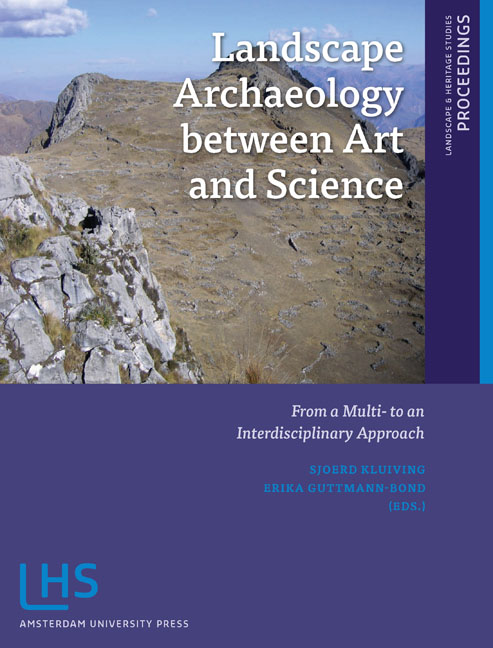Book contents
- Frontmatter
- Contents
- Preface
- Introduction: LAC2010: First International Landscape Archaeology Conference
- THEME 1 HOW DID LANDSCAPE CHANGE?
- THEME II IMPROVING TEMPORAL, CHRONOLOGICAL AND TRANSFORMATIONAL FRAMEWORKS
- THEME III LINKING LANDSCAPES OF LOWLANDS TO MOUNTAINOUS AREAS
- THEME IV APPLYING CONCEPTS OF SCALE
- THEME V NEW DIRECTIONS IN DIGITAL PROSPECTION AND MODELLING TECHNIQUES
- THEME VI HOW WILL LANDSCAPE ARCHAEOLOGY DEVELOP IN THE FUTURE?
- Miscellaneous Endmatter
5.6 - The ue of digital Devices in the Research of Hungarian Monastic gardens of the 18th Century
Published online by Cambridge University Press: 21 January 2021
- Frontmatter
- Contents
- Preface
- Introduction: LAC2010: First International Landscape Archaeology Conference
- THEME 1 HOW DID LANDSCAPE CHANGE?
- THEME II IMPROVING TEMPORAL, CHRONOLOGICAL AND TRANSFORMATIONAL FRAMEWORKS
- THEME III LINKING LANDSCAPES OF LOWLANDS TO MOUNTAINOUS AREAS
- THEME IV APPLYING CONCEPTS OF SCALE
- THEME V NEW DIRECTIONS IN DIGITAL PROSPECTION AND MODELLING TECHNIQUES
- THEME VI HOW WILL LANDSCAPE ARCHAEOLOGY DEVELOP IN THE FUTURE?
- Miscellaneous Endmatter
Summary
ABSTRACT
Hungarian monastic garden art of the 18th century included several distinct types of garden, which differed according to the specific religious orders and also to their geographical location, producing great diversity. The gardens were forced to change with history, and as a result, there are hardly any monasteries today that still preserve visible remains of the formal garden design. Therefore, the restoration of these gardens to a great extent has to rely on archival research to a great extent. However, owing to the inaccuracy and insufficient quantity of data, further methods are also needed to achieve authenticity. Though the use of digital devices is not new in garden research, it is still not used widely, especially not in Hungary. Yet, in the case of monastery gardens, its application can no longer be omitted, because this is the only way to get useful information on the gardens. This paper discusses how the most frequently used digital methods, GIS and geophysics can be applied in the case of monastic gardens. Generally, GIS software makes it possible to stretch period maps and layouts over today's more accurate, georeferenced maps and thus find the exact GPS coordinates of the garden elements, after which these can be found on site. Where nothing visible has remained, geophysical surveys can be applied. However, both methods face difficulties in the case of monastic gardens, as will be presented. Still, with the complex use of these digital devices, the models of the theoretical former gardens can be constructed, which is essential in understanding monastic garden art and also for the conservation of these gardens.
KEYWORDS
garden archaeology, monastic gardens, conservation, restoration, GIS, geophysics
INTRODUCTION
The Christian religious orders have bequeathed a great amount of spiritual and cultural heritage that embraces all the Christian parts of the European continent. Since their establishment, these orders were the determinants of the prevailing intellectual life. From the Middle Ages, all works that contributed to the spread of literacy were centred in the monasteries for centuries. The heritage of different monastic orders, however, manifests itself not only in intangible, but in material ways as well, seen directly in their environment. Depending on their monastic aims, religious orders settled either in towns or on the contrary, in peaceful, natural environments far from other human settlements.
- Type
- Chapter
- Information
- Landscape Archaeology between Art and ScienceFrom a Multi- to an Interdisciplinary Approach, pp. 379 - 394Publisher: Amsterdam University PressPrint publication year: 2012



